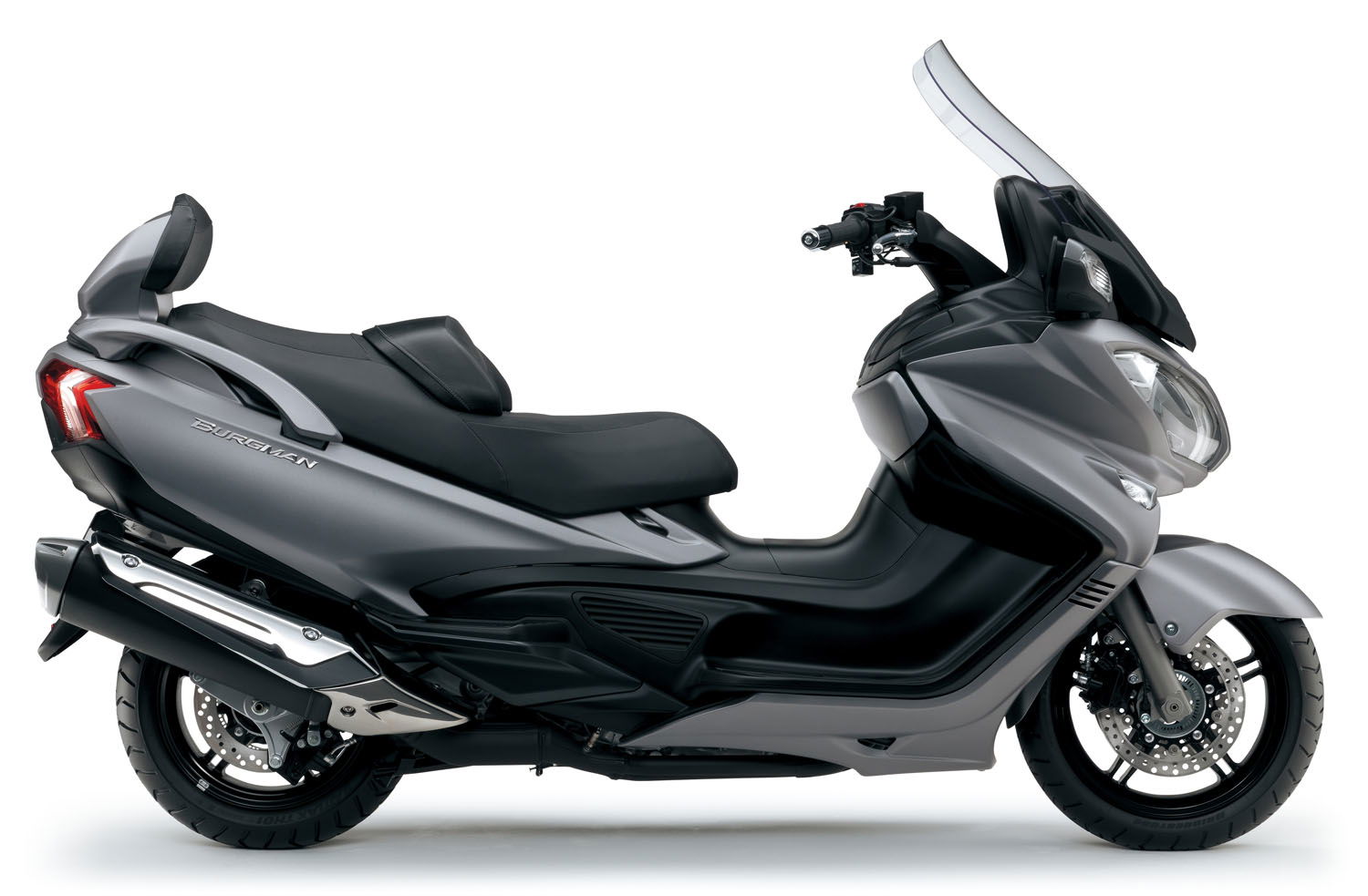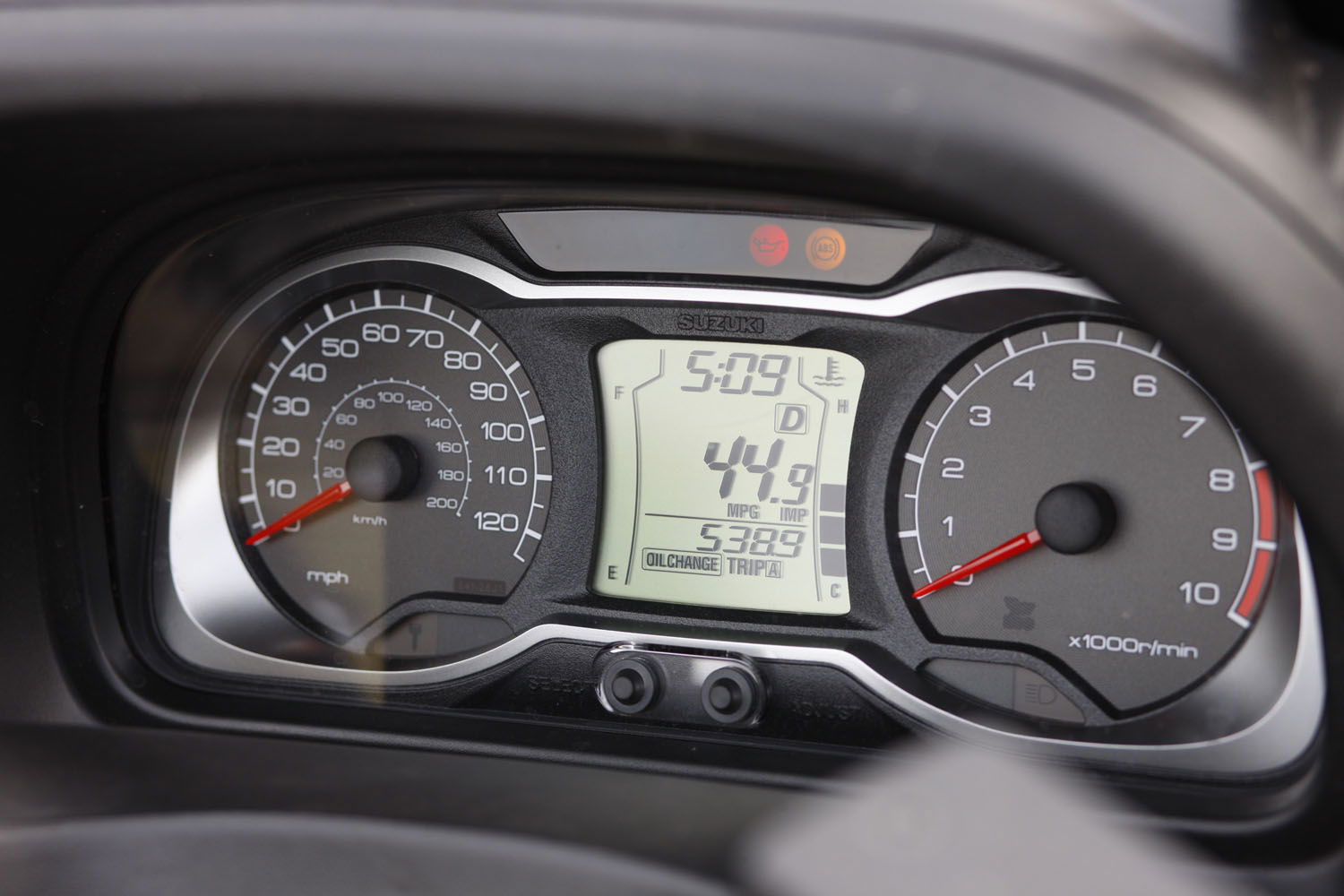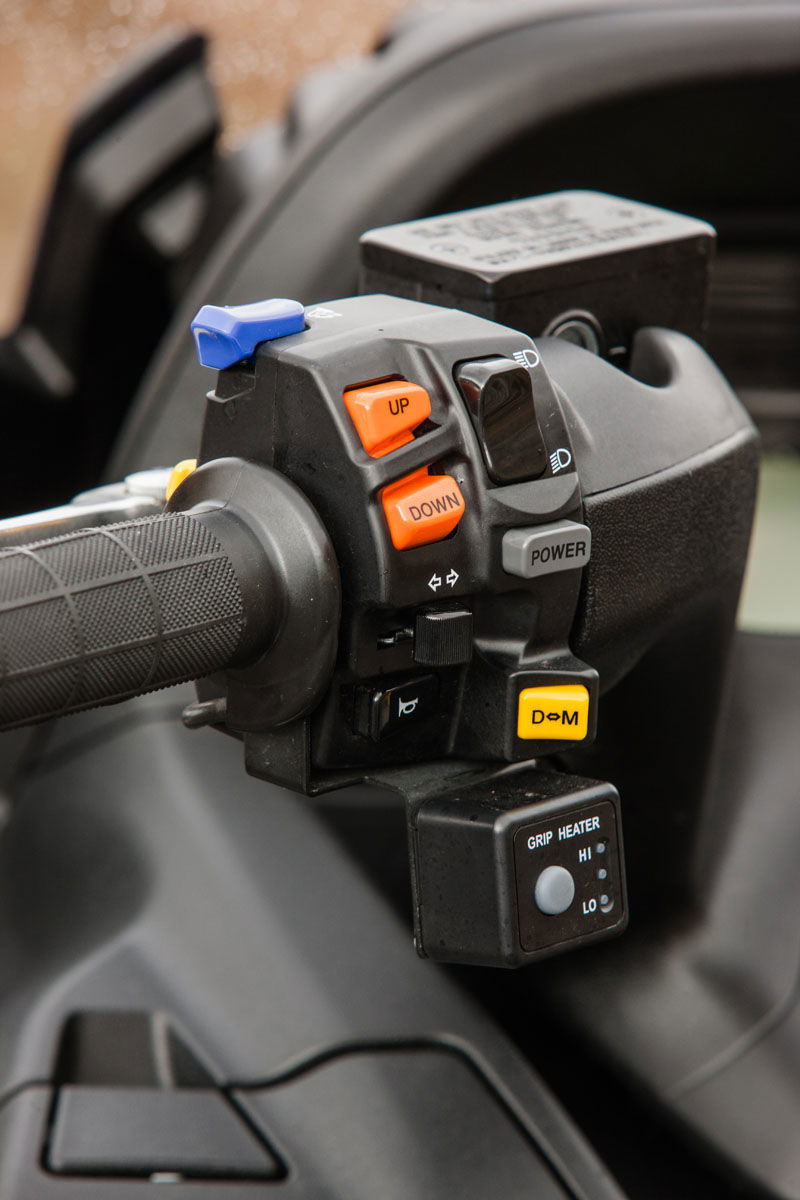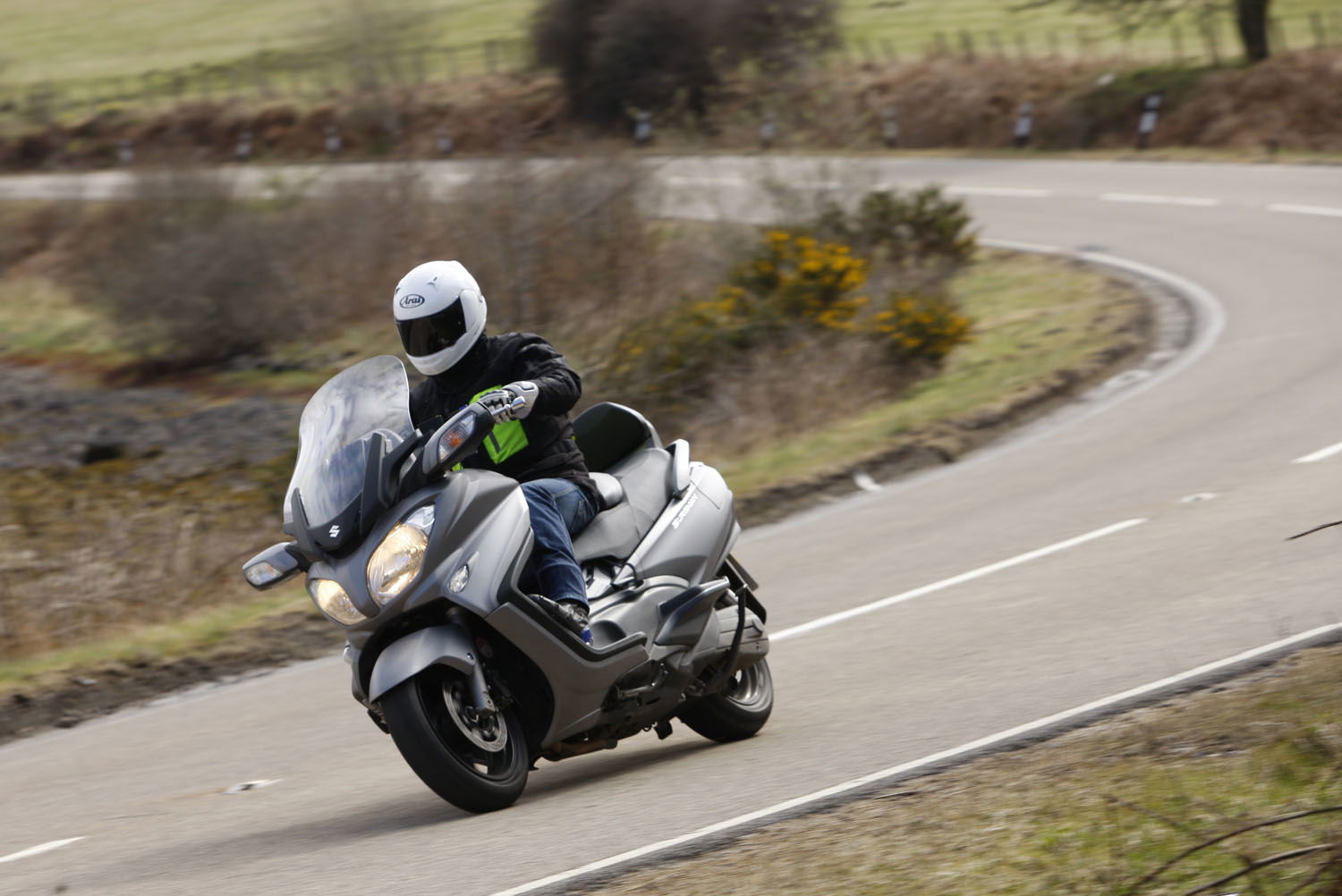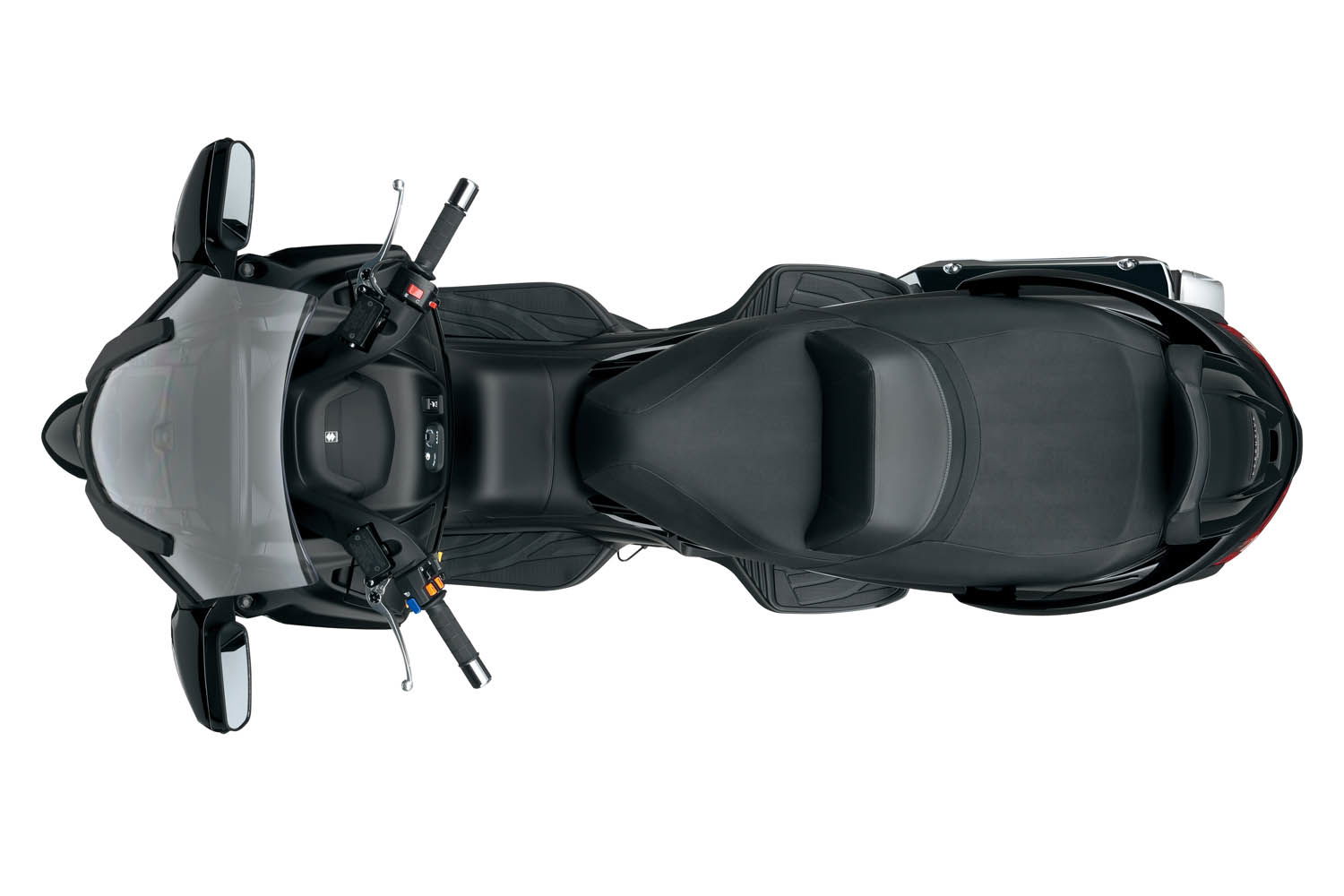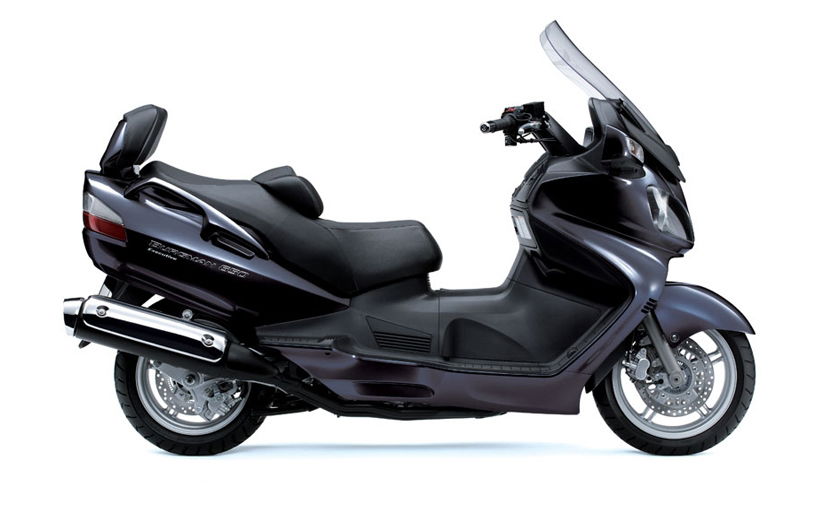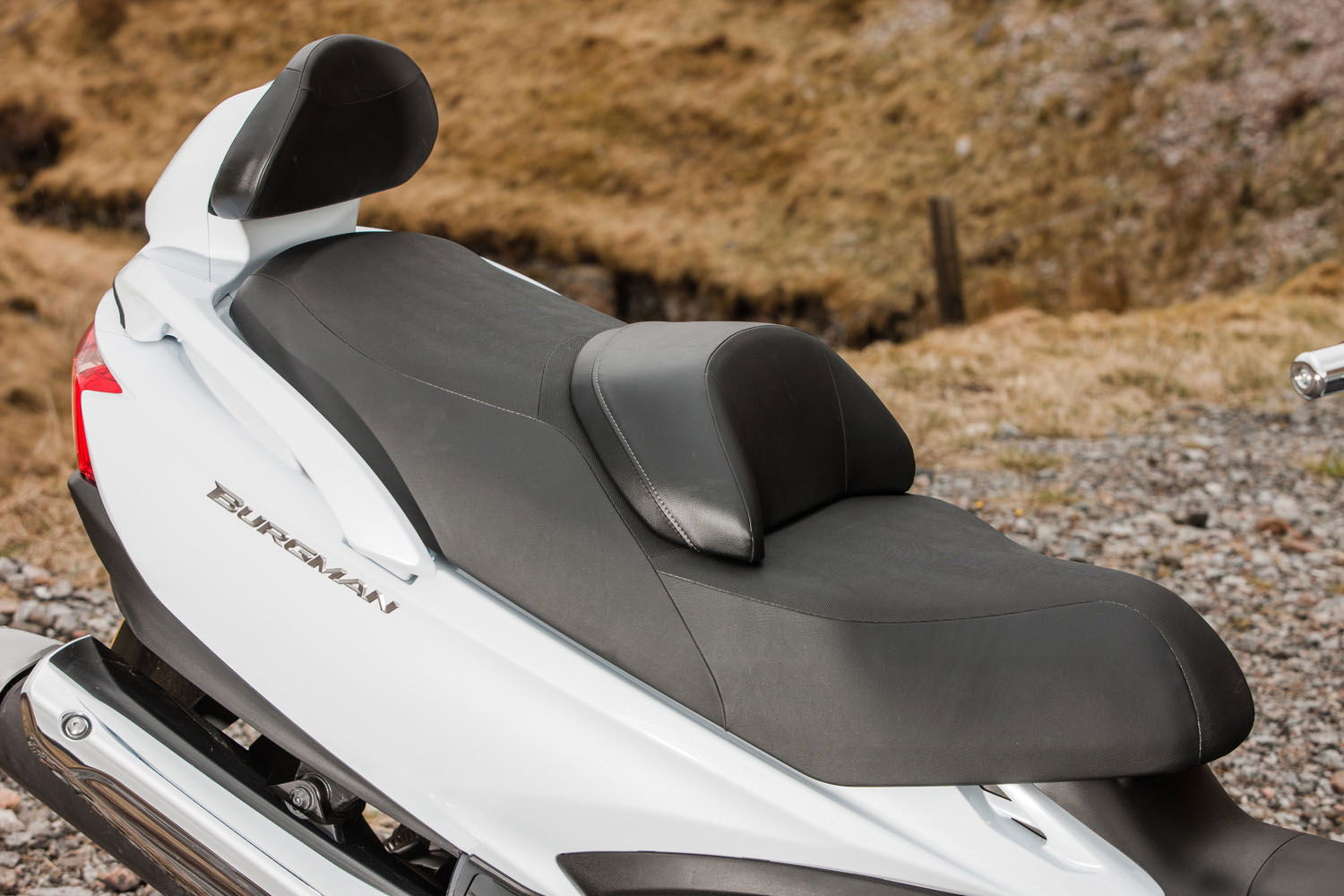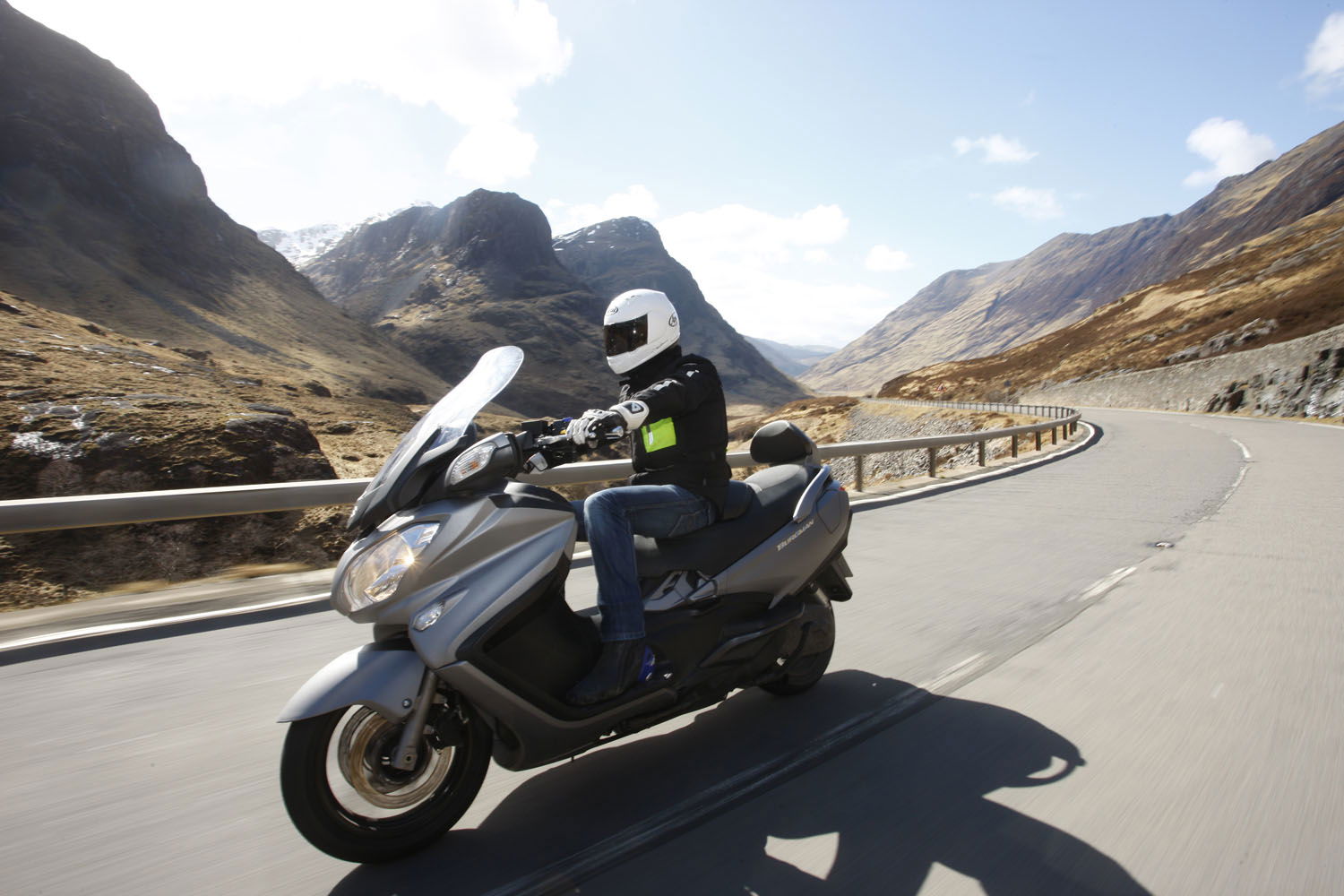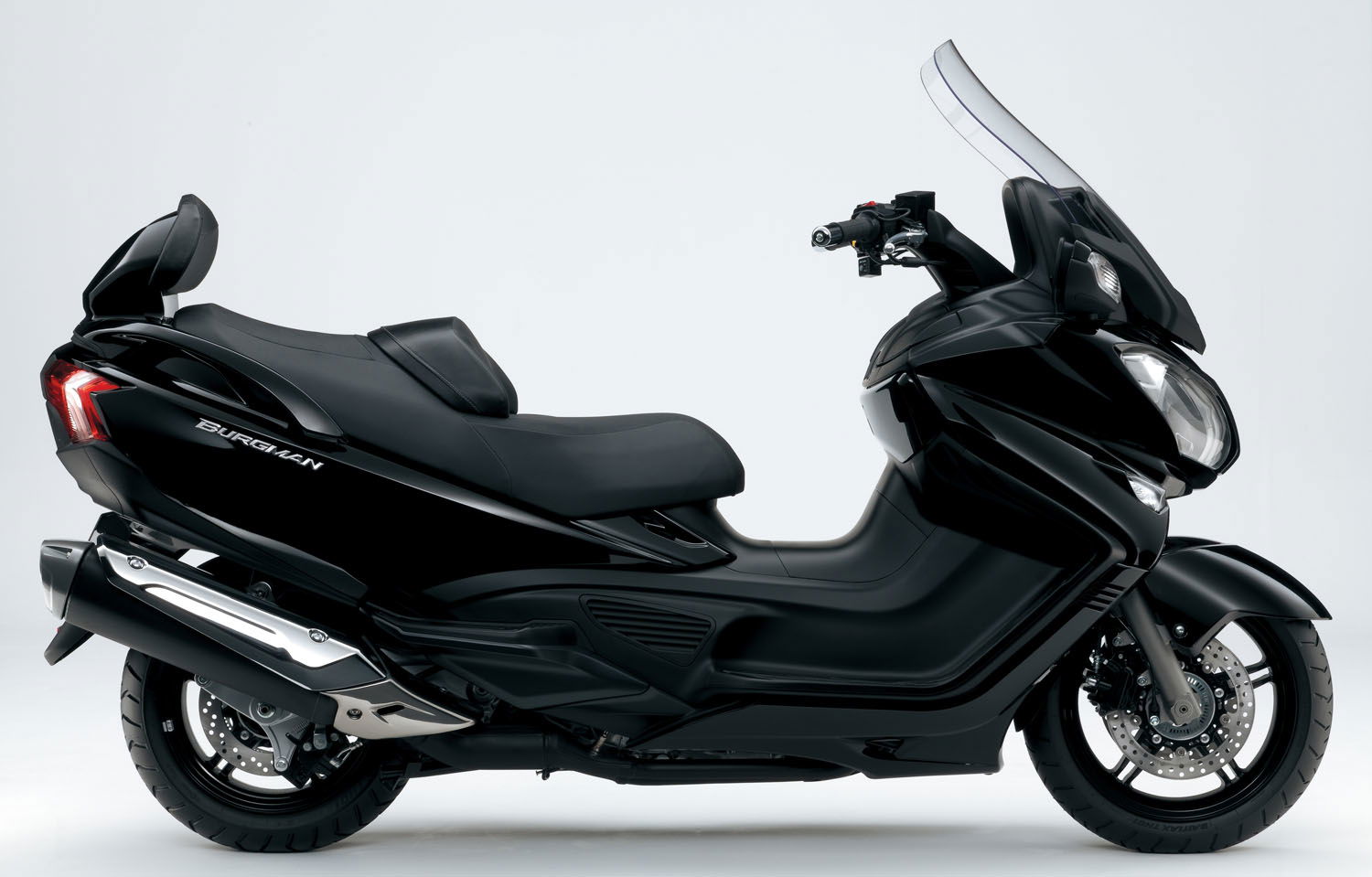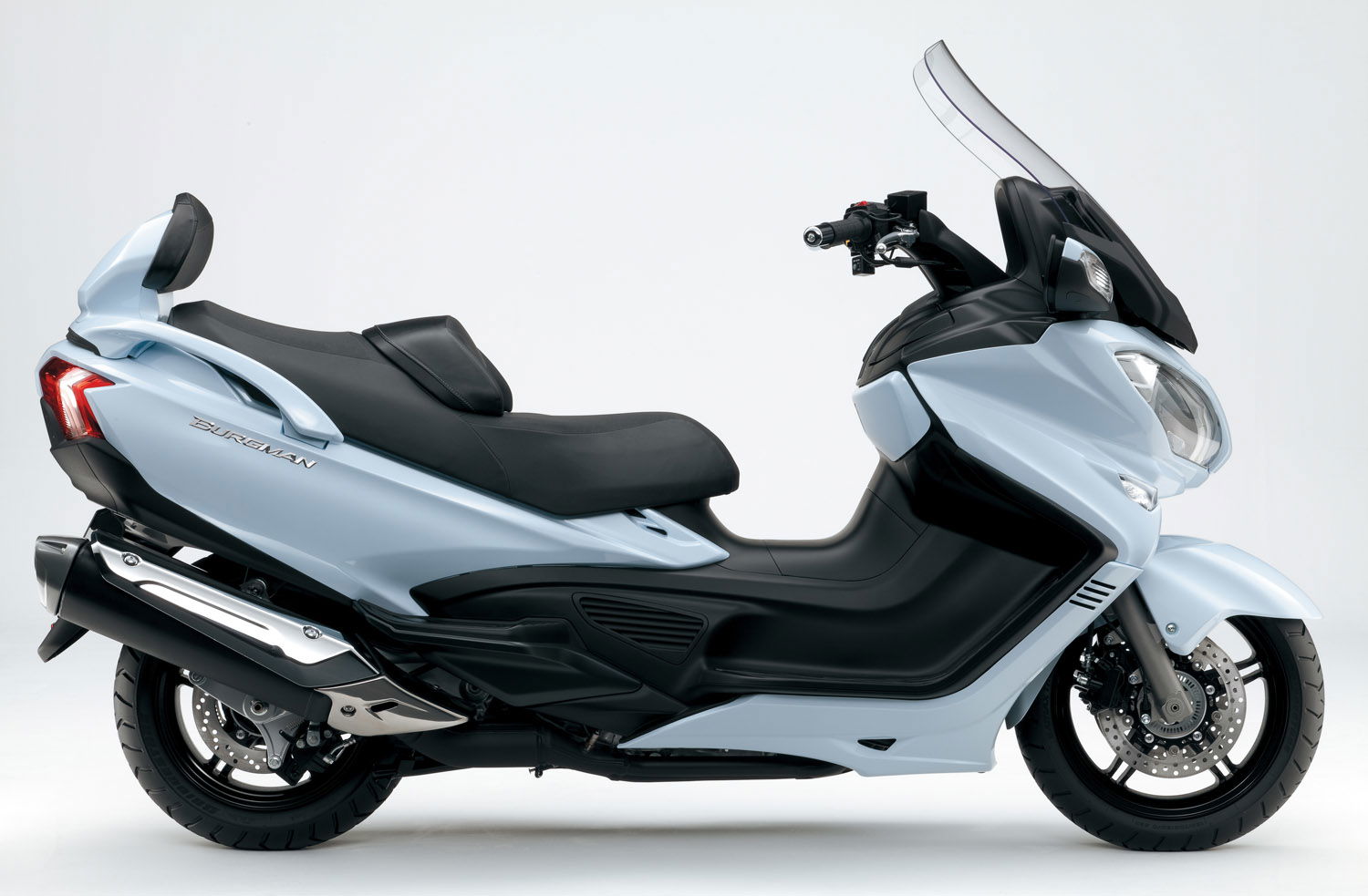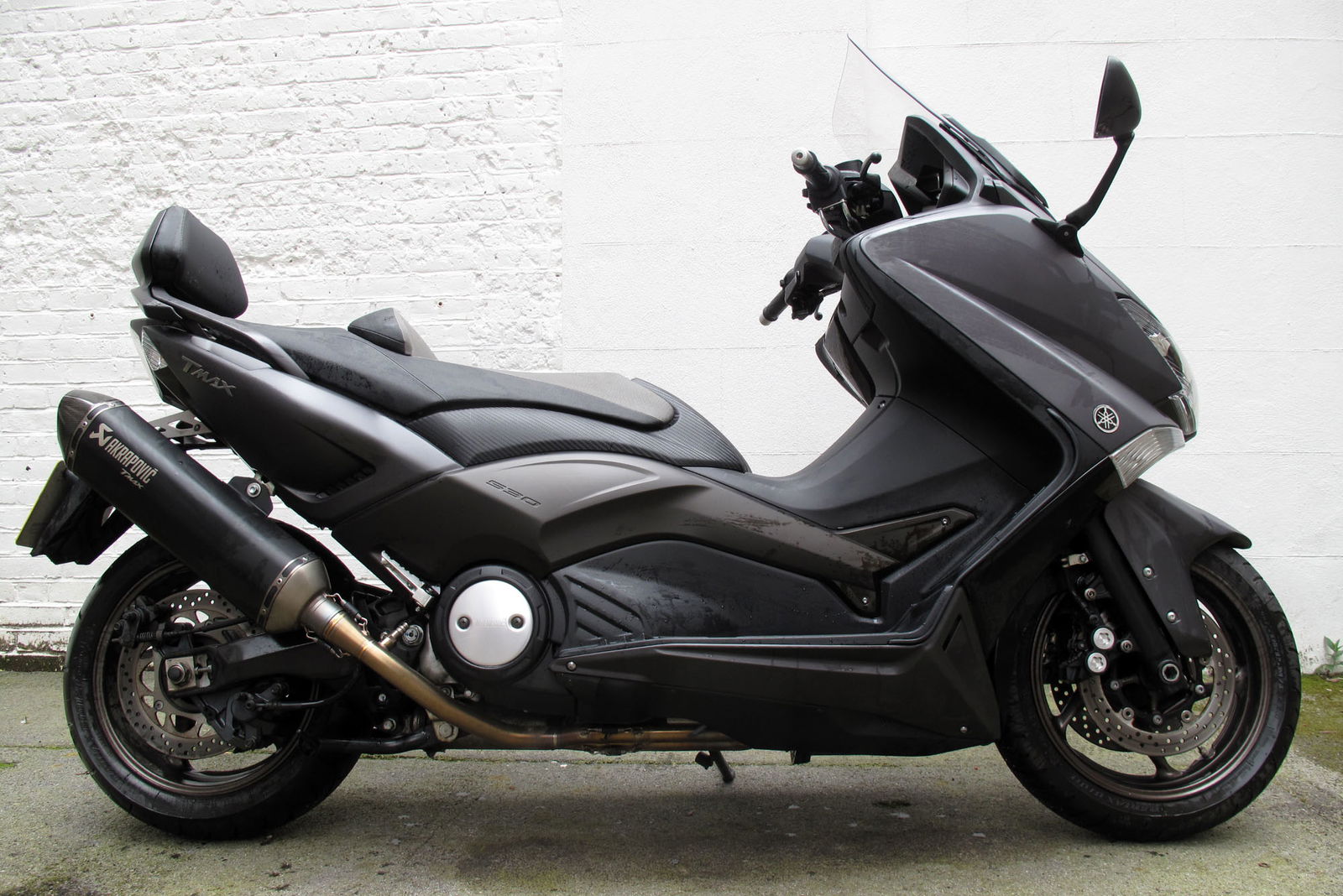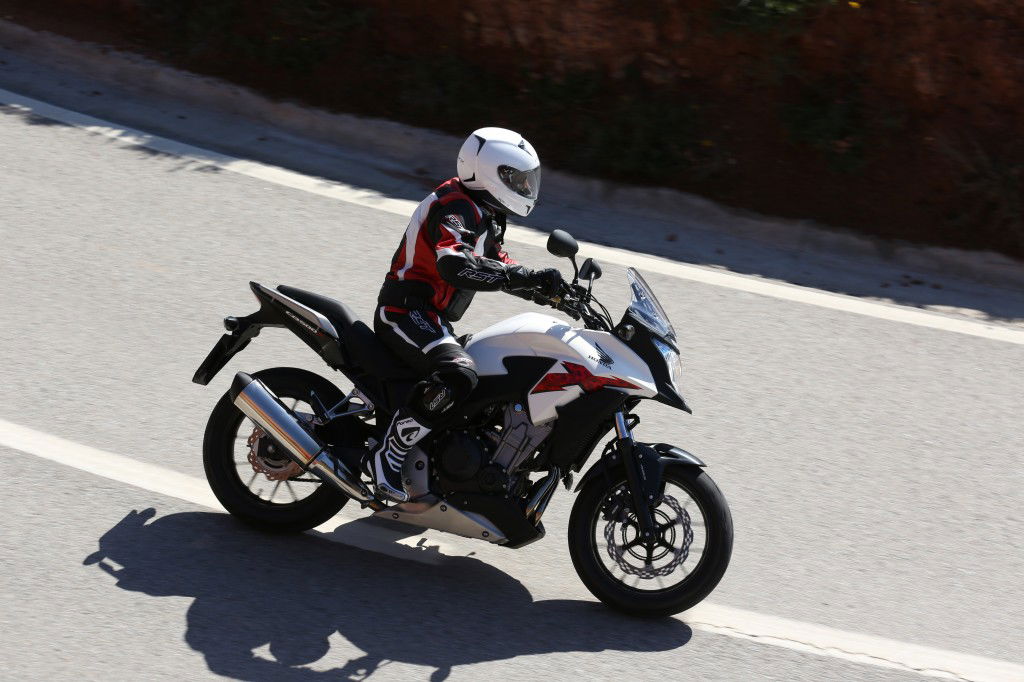2013 Suzuki Burgman 650 Executive ABS review
The Burgman 650 gets an overhaul after 10 years flying Suzuki's maxi-scooter flag. Are the updates enough to satisfy the Burgman-massive?

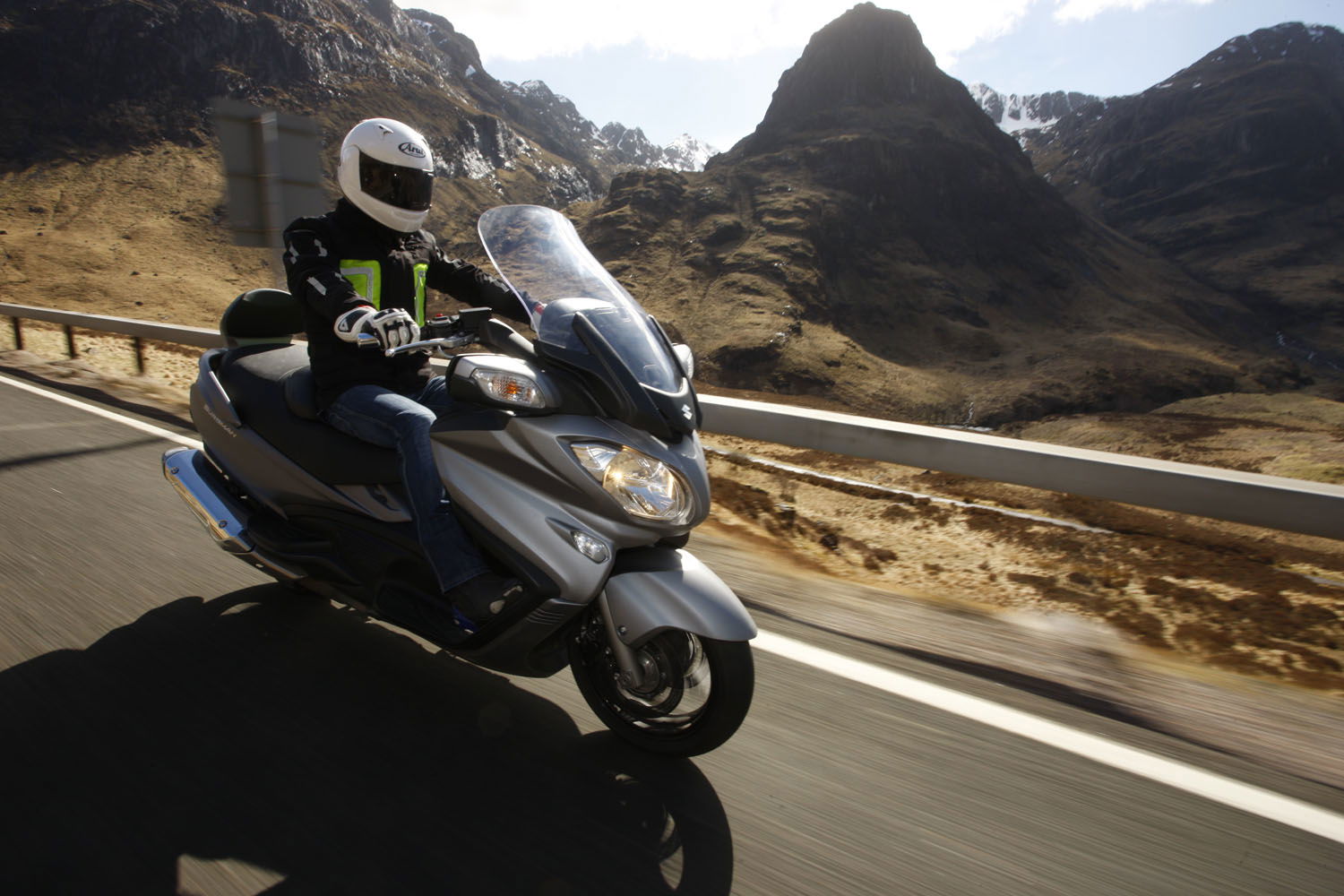
IT’S 10 years since the first Burgman 650 and 14 years since the 250 and 400 versions which essentially gave birth to the Burgman brand.
The Executive version of the 650 was launched two years after the initial model, offering ABS, heated grips, a heated seat and electric mirrors.
In its 10 years, the Burgman 650 hasn’t seen a great deal of changes. What has changed in the last 10 years is the motorcycling market and that’s one of the reasons Suzuki has blown the dust off the original 650’s project brief and given it a significant overhaul for 2013.
So what was the outgoing model good at? It was an effortless way to cover big miles, felt to me like the closest you’d get to a luxury automatic car on two wheels and it had plenty of underseat storage for the weekly shop or weekends away. Practical, fast, comfortable. However, I found it a touch on the cumbersome side when battling through London traffic, not that good on fuel, lacking a few luxuries and it looked as appealing as Susan Boyle in a swimsuit.
I welcome big-distance trips on maxi-scooters like the burgman 650 because they're genuinely effortless and banging out big miles on a motorbike always feels like a waste of a gearbox and perfectly good tyres. On a maxi-scooter, you can relax into it and reach for the stereo. Well, if it had one.
Normally, I don’t write about looks and styling. You either like it or you don’t and it’s not down to me to tell you what to think. However, in the Burgman’s case I find it hard to believe the new model’s styling is the product of a ‘back to the drawing board’ approach, where Suzuki claim hundreds of sketches were created before settling on the bike you can see here.
Put the new and old models side by side and it’s hard to spot who’s who.
It’s too conservative and it could have been much more stylish, I’m sure. It could have looked futuristic, instead it looks slightly tweaked. It’s not radical but then, I suppose, you don’t want to alienate your current audience. At the same time, I’m not sure this new model’s looks will challenge those who’ve previously dismissed the Burgman 650 to give it another chance.
The new Burgman does have less of a lumpy look to it, there are more angles and less visual bulk, due to a slimmer seat (which is now 10mm higher), a smaller rear end and in places, coloured bodywork panels have been replaced with black plastic. That said, the new Burgman 650 Exec ABS weighs the same as the outgoing model; 277kg.
While there’s no hiding that weight, the new model’s clutch has been changed to reduce drag by 35% making it easier to push around. It no longer feels reluctant when you’re trying to manoeuvre it back and forward.
On the move, the weight is less of a problem and like all scooters, it feels like it’s sat below the wheel spindles and doesn’t hinder the handling. The riding position feels familiar, the seat firm but comfortable. The buttons on the handlebars still look like they’ve been robbed from a scientific calculator while the new clocks no longer look like the display of that scientific calculator; they’ve gone from being chunky digital numbers to a mix of digital with analogue speedo and rev counter. Let’s not start the debate of whether a scooter, even one with a manual override, needs a rev counter.
Suzuki claim the screen size hasn’t changed but it feels smaller. The seat is 10mm higher which could give the impression the screen is shorter. It’s still motor-driven and operated by a switch on the right-hand handlebar. It sounds so simple, but I’d like to see another 50mm of travel to get the screen up higher. It’s already very good but when you’re busting out the miles, you never moan about having too much wind protection.
Power remains unchanged but in confirming to EURO 3 emissions standards, I can’t help but wonder if the bottom end has suffered slightly. Sure, a CVT never offers the sharpest of throttle response but the Burgman would definitely benefit from a slip-on exhaust, like on the TMAX Black Max I tested recently. It smooth to the point of being soft off the mark. Suzuki claims a 15% improvement in fuel economy thanks to less mechanical loss. The outgoing model was always a bit juicy.
The Burgman 650 tops out at 110mph but feels at home around 80mph. When the needle heads north of 90mph on flowing roads the front end starts to fumble around for the white flag. It’s no slouch on a twisty road, drops into corners with ease, has plenty of ground clearance, but there’s a definite limit to what a 15-inch front and 14-inch rear will put up with.
It’s not a bike you’d buy to go for a Sunday blast; it’s too refined for that.
The Burgman 650 retains the ‘POWER’ button of the old model. It holds onto its revs for longer before changing gear and the engine braking feels more pronounced when this mode is switched on. However, I reckoned it cost me at least 10% in terms of fuel economy and only really benefits you if you’re going for a point-and-squirt overtake.
It also retains the manual mode, which when selected means you can use the ‘Up’ and ‘Down’ buttons on the left handlebar to change gear. To me it feels similar to when you play an arcade driving game and think you’re getting a bit good so you then switch to a simulation mode where you have to change gear and then suddenly all you can concentrate on is changing gears and everything else goes down the pan.
I’m not sure why you’d want a manual mode on a scooter; it would be like having instant coffee you have to grind yourself. Still if Suzuki insists on persisting with manual mode, I’d prefer it if the gear selection used your left-hand index finger to change up and thumb to change down. As it stands, the gear selection sits somewhere around the horn and high beam switch and you do it all with your thumb. In a world first of any motorcycle ever: the switchgear doesn’t fall easily to hand.
In Standard power mode over the course of 100 miles, the Burgman 650’s onboard computer showed a 45.3mpg average while on Power mode over the course of 100 miles, it returned 38.1mpg average. However, we were riding a touch faster in Power mode. The fuel light comes on at the 100-mile mark but on my calculations, expect between 125 (wide open) and 150 miles (fast A-roads) from the 14-litre tank. It’s easily comfortable-enough for a 200-mile stint but even riding it like you'd paid for the petrol you're going to get a maximum of 180-miles from the tank, so it’s a shame the new model doesn’t feature a larger tank; even an extra litre would make a difference.
The ABS features a new lighter unit and new software and it works well. The brake discs are now floating and while they may be stronger, I’d like to see a bit more power there. Small wheels and powerful brakes can present a problem, but I’m just after a little bit more power and with ABS as standard, there’s little to go wrong.
The heated seat was as warm as anything I’ve experienced in a car, I love it. Whenever I ride a scooter without this option, I can’t help but mark it down. For me, a heated seat feels like a reward for leaving the car at home and choosing a more efficient way to get around. I wish motorcycles had them. However I can’t say the same for the heated grips which I struggled to feel. Other testers had mixed opinions too, with some saying they worked a treat, others, like me, couldn’t feel them.
A small aside but worthy of note is the heated grip control which hasn’t changed from the old version and still looks like it’s been bolted on as an after-thought, using bits from Maplin. For the next Burgman, I reckon Suzuki should take a look at KTM’s 1190 Adventure for a lesson on how to reduce the number of physical buttons. inctead replacing them with easily accessible options on a digital dashboard.
So what’s lacking on the new Burgman?
For me big scooters are about the comfort and ease of an automatic car with none of the hassle of traffic. I’d like to see iPod connectivity, a radio and speakers just like you get on BMW’s K1600. Once you’ve got the screen up to its highest setting, wind noise is virtually eliminated and while cruising through the open expanse of the Scottish Highlands, a bit of Radio 2 would have been a welcome addition.
While there is a passenger backrest - which is a great confidence booster for nervous pillions - it still lacks adjustment. The seat on the Burgman is big enough to carry two pillions but with one, the gap between rider and pillion is too big. The pillion feels like excess baggage but an adjustable backrest would allow you to position the pillion closer to the rider and the centre of the bike, which helps the handling.
If you’ve never tried cruise control on a bike, you’re missing out. Bikes like the Burgman are about convenience and cruise control is another feature that helps make light work of long journeys. It’s a shame there isn’t that option on the new Burgman.
Although our 200-mile route along the glorious A82 was the best way to rapidly take in the Scottish Highlands, it perhaps wasn’t the best way to prove the Burgman’s more efficient engine and improved fuel economy. However when bikes like BMW’s F800GT can return 59mpg on a similar route ridden in much the same way, the 45mpg returned by the Burgman just isn’t impressive.
The 2013 Suzuki Burgman Executive ABS costs £8,799 which is £624 more than the outgoing model. UK importers of Japanese manufacturers tend to blame poor currency conversions for the prices of their range and with good reason; the price of the Yen has almost doubled over the last 10 years, from its low in 2007 to its peak in 2012 but the Yen has been progressively returning to its 2007 price over the last 12 months. Ultimately the end consumers don’t really care why a price rises, they just care when it does rise.
Die-hard Burgman 650 fans will probably make the move to this new model because they’ve already decided it’s the best maxi-scooter out there and they’re itching for a new toy.
While the new model gives the Burgman the update it’s been crying out for over the past five years, it’s a shame it costs more. It’s still practical, fast and comfortable, it still features cavernous underseat storage but it’s no more powerful, it’s no lighter, it’s no more comfortable and it doesn’t offer any more features. It’s still a great bit of kit but Suzuki haven’t given buyers a strong-enough reason to rush out and grab one.
Model tested: Suzuki Burgman 650 Executive ABS review
Colours: Metallic Matt Fibroin Grey, Pearl Bracing White and Glass Sparkle Black
Price: £8,799
